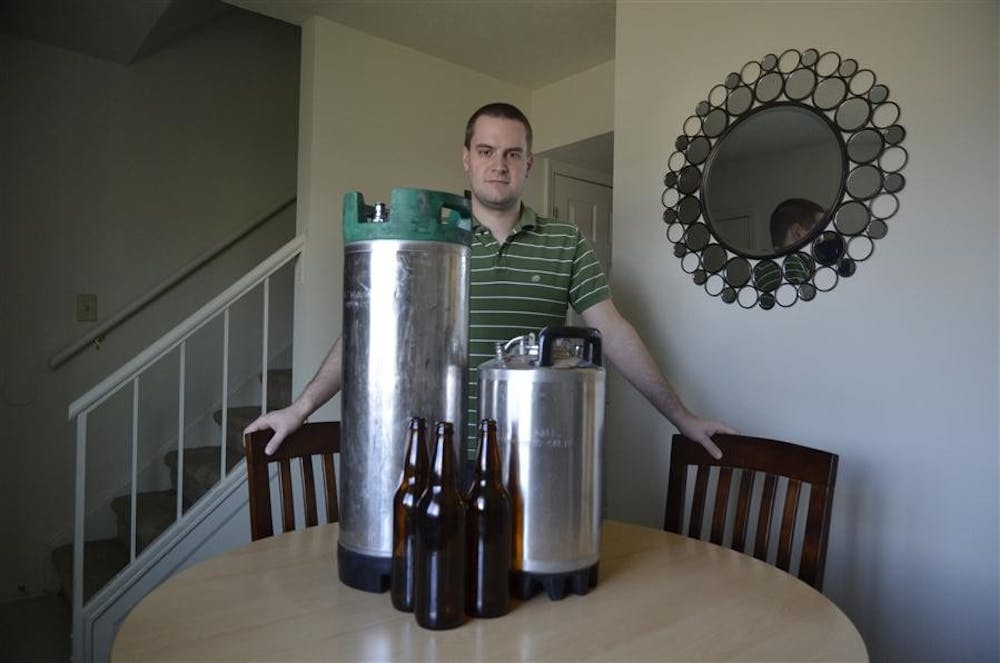When Chadd Powell goes to get a cold one after a long day, he has a few choices. He can pick a mass-produced brew like Budweiser, Coors or Samuel Adams. He can browse through the craft beer selections of Upland Brewing Company or Dogfish Head. Or he can pick something entirely different.
Powell, a graduate student in criminal justice, brews his own beer at home.
“Once you move past the undergraduate drink-’til-you-drop mentality and start getting into real taste,” he said, “that’s when things like this really matter.”
Powell is the president of the Bloomington HopJockeys, a local brewing club that opens its doors to anyone older than 21 who wishes to learn the art of making beer. He said it was nice to have a community of brewers when first learning instead of jumping in alone.
“I’ve never had any other hobby where you get to meet so many different kinds of people,” he said.
Bloomington resident Joshua Krieger is the vice president of the HopJockeys and said learning about and sharing beer is the main point of the monthly meetings.
“Typically we’ll talk about a certain beer style or some aspect of brewing. We’ll share brews and get feedback,” he said.
The other part of the HopJockeys, Krieger said, is a competition club.
Beer competitions take place across the country, and those homebrewers who are dedicated to producing quality beers compete on local, state and national levels for recognition on their brew’s aroma, appearance, flavor and other standards as set by the American Homebrewers Association.
“It’s a hobby that can take you fairly deep,” Krieger said.
Brewing in its simplest form, Powell said, takes four steps: boil, ferment, bottle, enjoy.
Before starting to brew, homebrewers must sanitize everything completely to avoid infection during the brewing process.
“Sanitation is the most important,” he said. “Even if you do all the stuff right, there’s still a chance something could get in there, and it’s off.”
Next, a grain, usually wheat or barley, is boiled with malt and hops. This is the main “brewing” stage of making beer. Brewers must then rapidly cool the mixture, called wort, without getting it contaminated.
“I’m really low-tech because I have to physically pour the hot wort into a cooling tank,” Powell said. “Some of the guys have pipes and a system set up where the beer never touches air until you bottle it.”
Once the wort is cooled, it sits and ferments for anywhere from two weeks to multiple months depending on the type of beer and the desired alcohol content. About two weeks before it is ready to drink, brewers bottle the beer with a little extra sugar to carbonate the beer in the bottle.
Then it’s a simple matter of refrigerate, pop open and enjoy.
Krieger said drinking his homebrewed beer is all part of the fun, but it has not taken the place of buying and enjoying commercial beer and learning about new ways to brew.
“Those of us who homebrew, it is not a replacement for going down to SaharaMart and trying new beers,” he said. “You’ll have what you brew and you’ll drink it and enjoy it, but it’s really about trying new beers and appreciating new breweries.”
Hausbräu
Bloomington's HopJockeys brew at home

Get stories like this in your inbox
Subscribe





